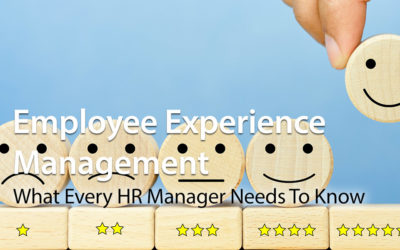Employee self-service portals are not a new idea. In fact, they’ve been used as an HR resource by many organizations for some time. These organizations have found that enabling employee self-service not only increases productivity, it also has knock-on effects in relation to staff morale and employee engagement. So much so that many of these companies have expanded the scope of their self-service portals to encompass the whole range of business processes. Read on to find out more about self-service portals and the benefits they will bring to your business.
Employee Self-Service: What Is It?
Traditionally employee self-service has been seen as a set of online tools that allow employees access to their HR records and payroll details. Using self-service applications, employees can change or update their information without having to complete numerous paper forms. Organizations that use employee self-service have found that it reduces the amount of paperwork and bureaucracy within the office thereby freeing up staff to get on with other important tasks. It’s no surprise then that employee self-service has now broadened to include other common interactions and tasks.
What Kind Of Tasks Can Be Completed?
The self-service approach lends itself to solving problems for employees. It’s perfect for answering those how, what, why questions that employees have such as:
- When is the next managers’ sales conference?
- How do I order new stationery?
- What is the deadline for submitting my claim for expenses?
- Where is the company safety and health policy located?
- How do I find out the balance on my retirement account?
- Who in the company is a subject expert in social media marketing?
The information and data can be organized by team, job role or subject matter – whatever makes sense for your business. Supported by an advanced search functionality and an intuitive menu design, the information is quickly and easily located by the user.
As a vehicle for disseminating and sharing information self-service portals are hard to beat. All employees will have instant access with just a single login. It’s a far more efficient and effective way to operate and it also means that your HR personnel are not being diverted from critical core activities by queries and requests for information from their colleagues in other teams.
The information and data itself can take a variety of forms including:
- How-to videos
- Webinars
- Podcasts
- Frequently asked questions
- Blogs
- Checklists
- Quizzes
The beauty of the online format is that you are not restricted to the written word: the possibilities for presenting information and data in alternative media are almost endless. All that’s required is a little imagination. Indeed, we all have our own preferences in relation to how best we absorb information and so offering a variety of media will ensure that the needs of all staff members are addressed.
In addition, the employee can access the information anytime and anywhere. And in a workplace where more staff members than ever before are working flexible hours or remotely, the open-all-hours nature of the employee self-service portal is essential.
What’s more, utilizing the simple and straightforward online forms builder, many of common processes can be completed via the self-service portal. It’s an easy task for employees to simply complete an online holiday request form which is then automatically routed to the manager for action. Perhaps, the user is wanting to submit a pre-appraisal form to their departmental head or wants to book up some continuing professional development through the corporate training calendar. Whatever the task may be, in just a few clicks of the mouse the information can be accessed, uploaded and routed to the right department.
Onboarding Of New Employees
The self-service approach is also particularly helpful in relation to onboarding new staff members. Inducting new employees to an organization often involves endless form filling, passive reading of manuals and policies, and being introduced to a great many colleagues and promptly forgetting their names! Usually, onboarding has been approached fairly casually and employees are often left to sink or swim.
The self-service portal can transform the process of induction so that the settling in period for new employees is curtailed and they can become productive and full members of the team much more quickly.
How does it do that? Well, simply put the employee portal contains a separate section that includes all the transactions and information a new member of staff needs to be aware of. Organized on either a job, team or geographic basis, the self-service portal offers great flexibility in tailoring an onboarding solution that meets the needs of the staff member.
Personnel and IT set up requirements can be completed online through the portal, as well as the general checklist of new employee obligations. In terms of corporate information and policies, instead of passively reading information, staff members can be taken through these key requirements using interactive media. Quizzes, videos and webinars are often a much more effective way to impart knowledge and understanding.
What’s more, managers can easily keep track of the new employee’s progress in relation to the onboarding checklist. And this is particularly helpful for auditing and compliance purposes.
For the new staff member, the self-service portal means that they can find all the relevant information themselves without having to constantly pester colleagues. In addition, the portal’s staff directory means that they won’t have to remember everyone’s names from day one – the directory will enable them to put a name to the face and vice versa. And it will help them to identify sources of knowledge and subject experts within the company.
Benefits Of The Self-Service Approach
We’ve touched on some of these already but in this section we look in detail at the many benefits on offer with a self-service portal.
It’s More Efficient

Onboarding Of New Staff Members Is More Effective
The streamlined process of onboarding new employees means that these staff members will be up and running much more quickly than in the past. They’ll have at their fingertips all the tools and information that they need to get the job done and so can be productive members of the team from day one. What’s more, the employee will be able to complete the onboarding process at a time and place that is convenient to them – whether it’s during their daily commute into work or from the comfort of their home outside standard office hours.
It Enhances Employee Engagement
The employee self-service approach also has a positive impact on staff morale and employee engagement. One of the key drivers of employee engagement is freedom and self-expression. Employees that feel as though they are empowered and have the ability to make decisions tend to feel more engaged and involved. Therefore, giving staff the tools and ability to get on with it for themselves via a self-service portal is very liberating and motivating. Organizations that are already using self-service portals have found that their recruitment and retention rates have improved, along with overall levels of staff engagement.
In addition, much like Facebook and Twitter offer news feeds based on previous viewing history and preferences, so some businesses are offering increasingly personalized employee portals. In fact, it’s a great way to engage with staff members with specific news and updates relevant to the jobholder and their team. What’s more, employees are able to customize the portal by embedding frequently used tools and apps such as G Suite or Office 365 allowing for quick and easy access. And widgets and iframes can be utilized for swift access to essential websites such as, for example, the NASDAQ.
It’s Easy To Update
Employment law as well as tax and payroll legislation is constantly changing. There’s tremendous pressure on employers to regularly update their systems with the very latest changes. This process is far simpler with a centralized employee portal as changes can be hardwired into the software rather having to revise, publish and distribute paper processes. In addition, the employee can have complete confidence that the information they are accessing on the employee portal is the very latest. This also helps in the quest to ensure compliance and reduces organizational risk while helping to keep operational costs down.
Employee Self Service Portals Are Not Just For The Big Players

Cost-effective as well as being easy to set up and simple to use, the self-service portal has much to offer the smaller business and will help to ensure those pain points do not get out of hand. In addition, an employee self-service portal is capable of growing alongside your business. It’s a flexible and adaptable solution which means you won’t outgrow the platform and have to invest in alternatives any time soon.
Employee Self Service Portals Provide Solutions For Every Business
So, whether you are a small enterprise with less than ten employees or you are a big corporate with hundreds of staff, a self-service portal could be the solution you’re looking for. Enabling, facilitating, assisting are all attributes that are relevant in the context of employee self-service portals. And these same attributes contribute to improved internal communications, more streamlined business processes, better sharing of information and enhanced knowledge transfer no matter how many employees you have.
If you want your organization to benefit from the power of employee self-service portals, then get in touch with the team at MyHub today. Why not take advantage of our no-obligation demo or 14-day free trial and discover for yourself the possibilities.










